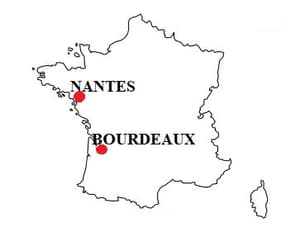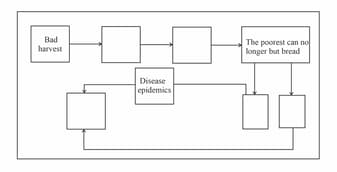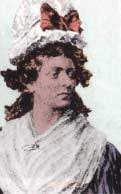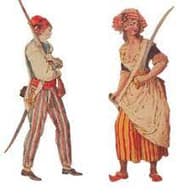Subsistence crisis is an extreme situation where the basic means of livelihood are endangered. It occurred frequently in France during the Old Regime.
What impact did the rapid population growth in France from to have on the economy, leading to significant challenges for the majority of the population?

Important Questions on The French Revolution

What is the significance of these two places in the context of slave trade in seventeenth century France?
With reference to the above image, explain how her writings and actions challenged the traditional gender norms in eighteenth century France. How did she contribute to the broader discourse on equality and human rights during the revolutionary era?
The newly elected assembly was called the Convention. On September it abolished the monarchy and declared France a republic. As you know, a republic is a form of government where the people elect the government including the head of the government. Louis XVI was sentenced to death by a court on the charge of treason. On January he was executed publicly at the Place de la Concorde. The queen Marie Antoinette met with the same fate shortly after.
Analyse the methods employed during the Reign of Terror in France (-) under Robespierre's government. How did these methods impact various aspects of society, including economy, social structure, and cultural norms?
With reference to the above image, describe the role and significance of the sans-culottes in the French Revolution, emphasising how their clothing preferences represented a departure from traditional social norms.
Fill in the boxes in the given image with appropriate terms from among the following:
Food riots, scarcity of grain, increased number of deaths, rising food prices, weaker bodies.

The Declaration of Rights of Man and Citizen
- Men are born and remain free and equal in rights
- The aim of every political association is the preservation of the natural and inalienable rights of man; these are liberty, property, security and resistance to oppression
- The source of all sovereignty resides in the nation; no group or individual may exercise authority that does not come from the people
- Liberty consists of the power to do whatever is not injurious to others
- The law has the right to forbid only actions that are injurious to society
- Law is the expression of the general will. All citizens have the right to participate in its formation, personally or through their representatives. All citizens are equal before it
- No man may be accused, arrested or detained, except in cases determined by the law
- Every citizen may speak, write and print freely; he must take responsibility for the abuse of such liberty in cases determined by the law
- For the maintenance of the public force and for the expenses of administration, a common tax is indispensable; it must be assessed equally on all citizens in proportion to their means
- Since the property is a sacred and inviolable right, no one may be deprived of it, unless a legally established public necessity requires it. In that case, just compensation must be given in advance
Refer to Source given above and compare the views of Desmoulins and Robespierre and answer the following questions.
1. How does each one understand the use of state force? What does Robespierre mean by ‘the war of liberty against tyranny?
2. How does Desmoulins perceive liberty? What did the constitutional laws on the rights of individuals lay down? Discuss your views on the subject in class.
Identify the symbols in the image which stand for liberty, equality and fraternity.










